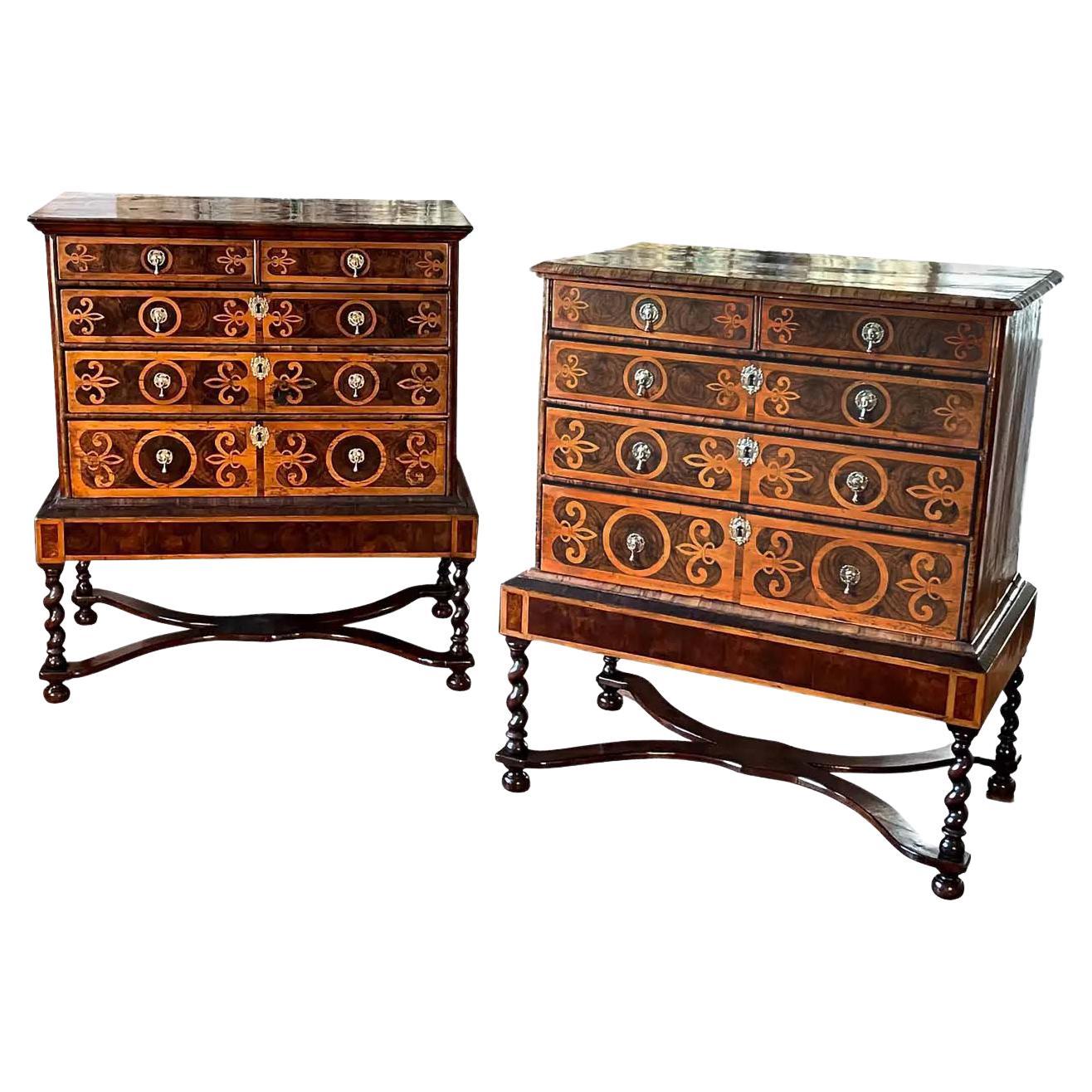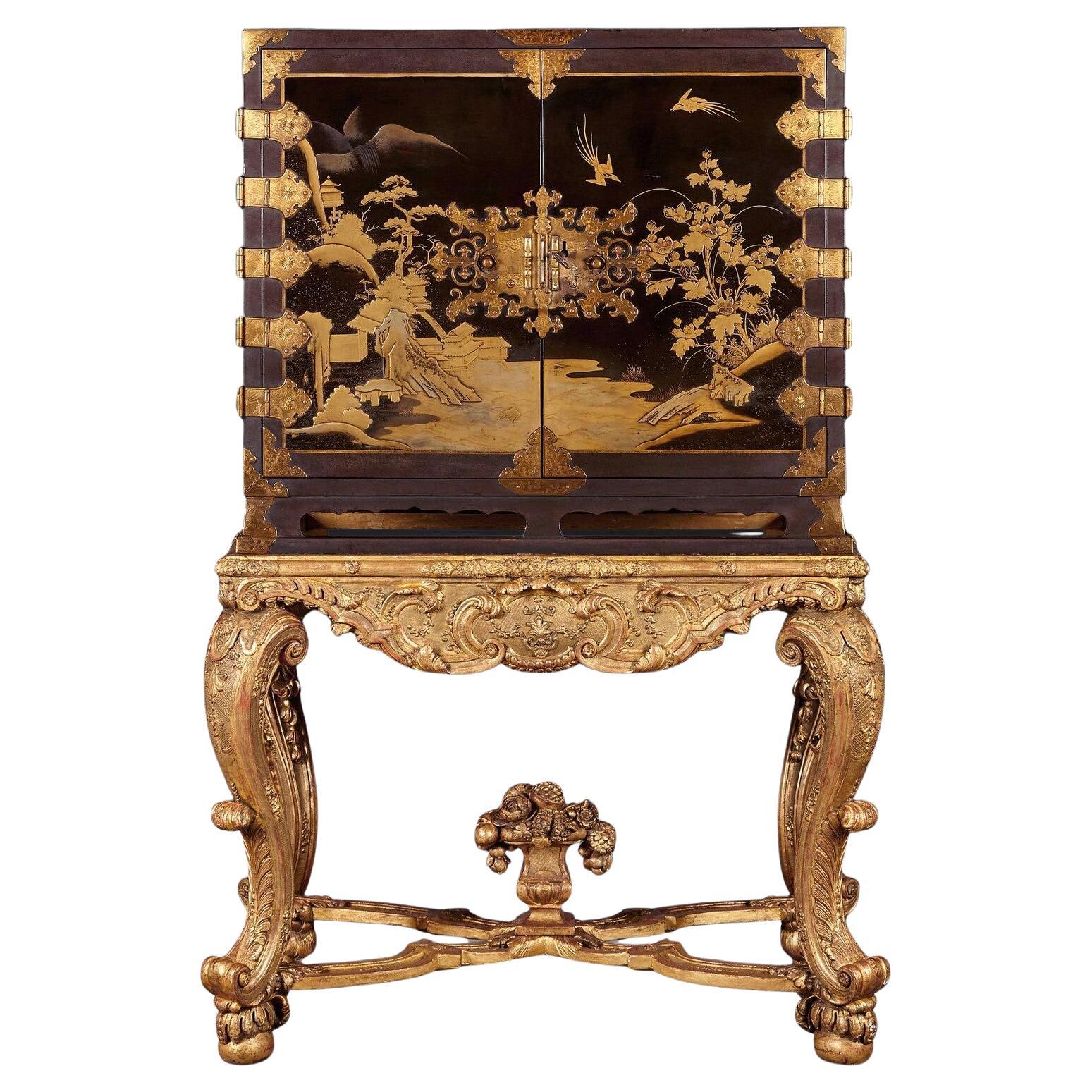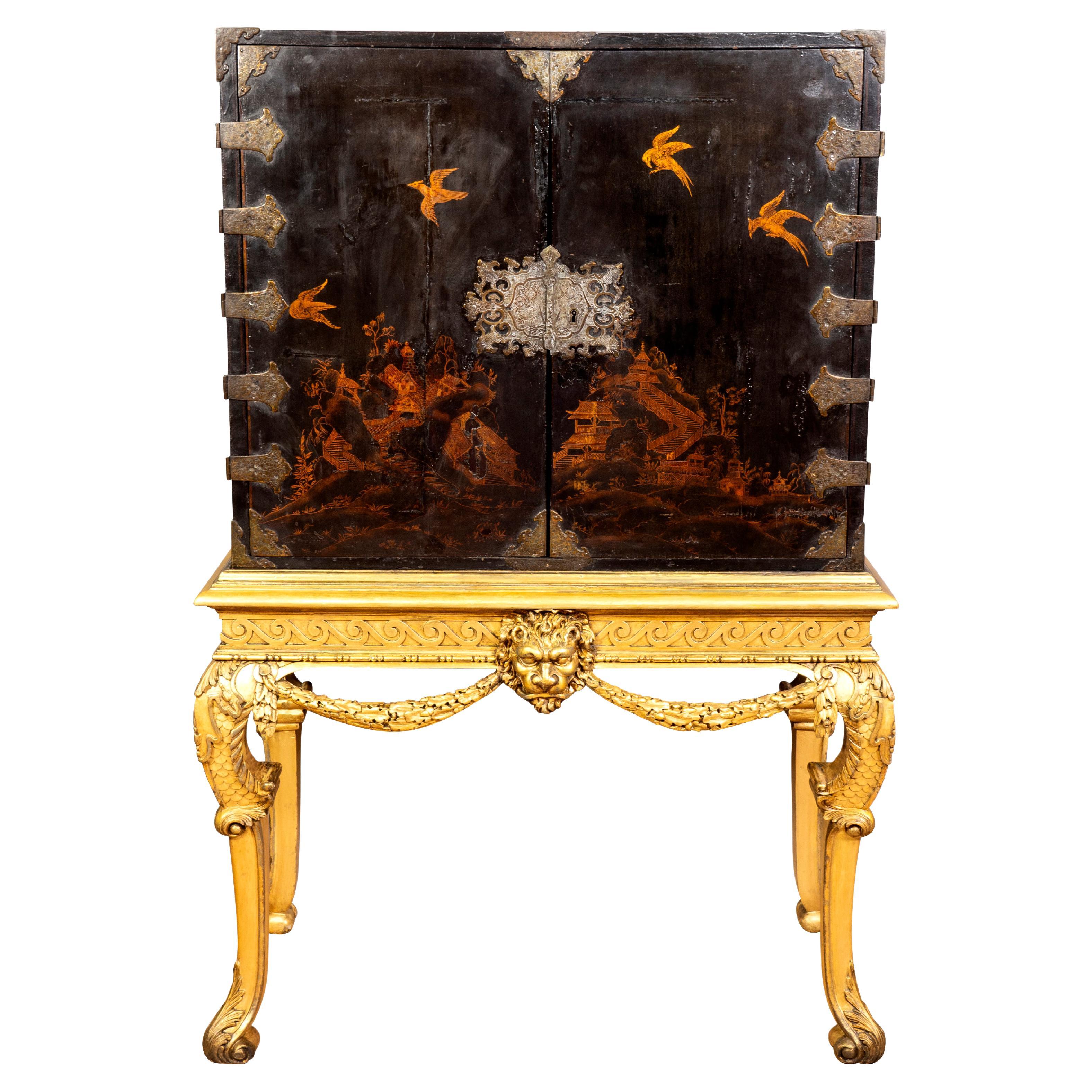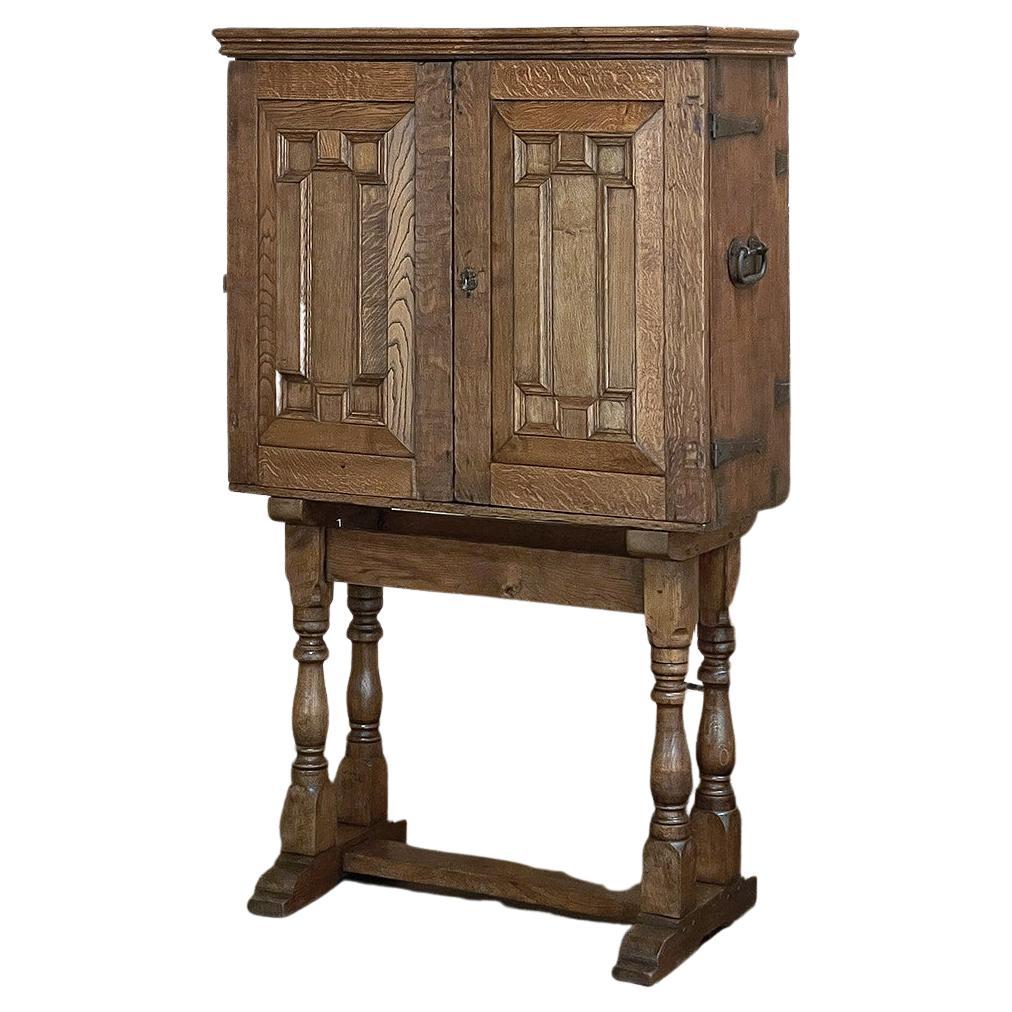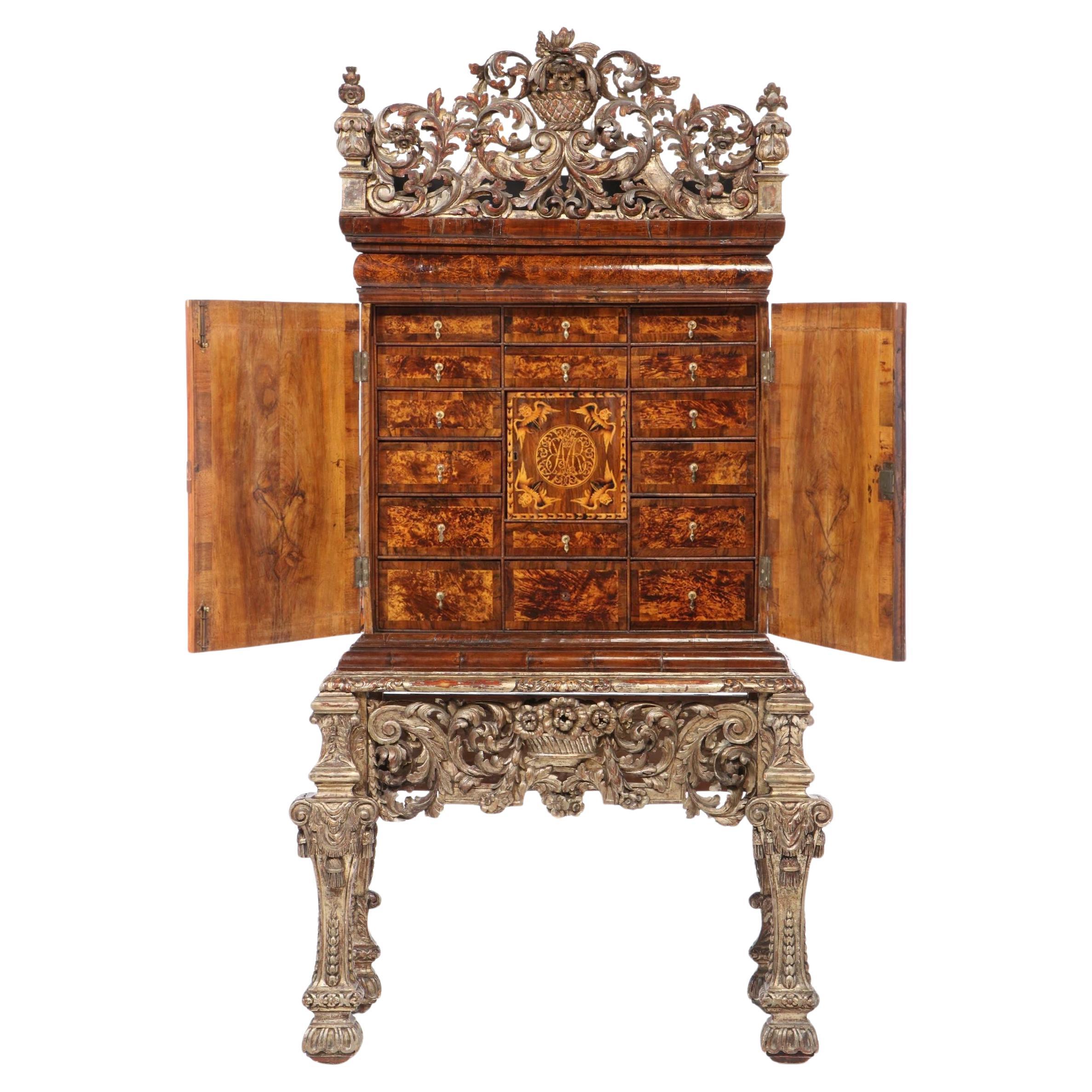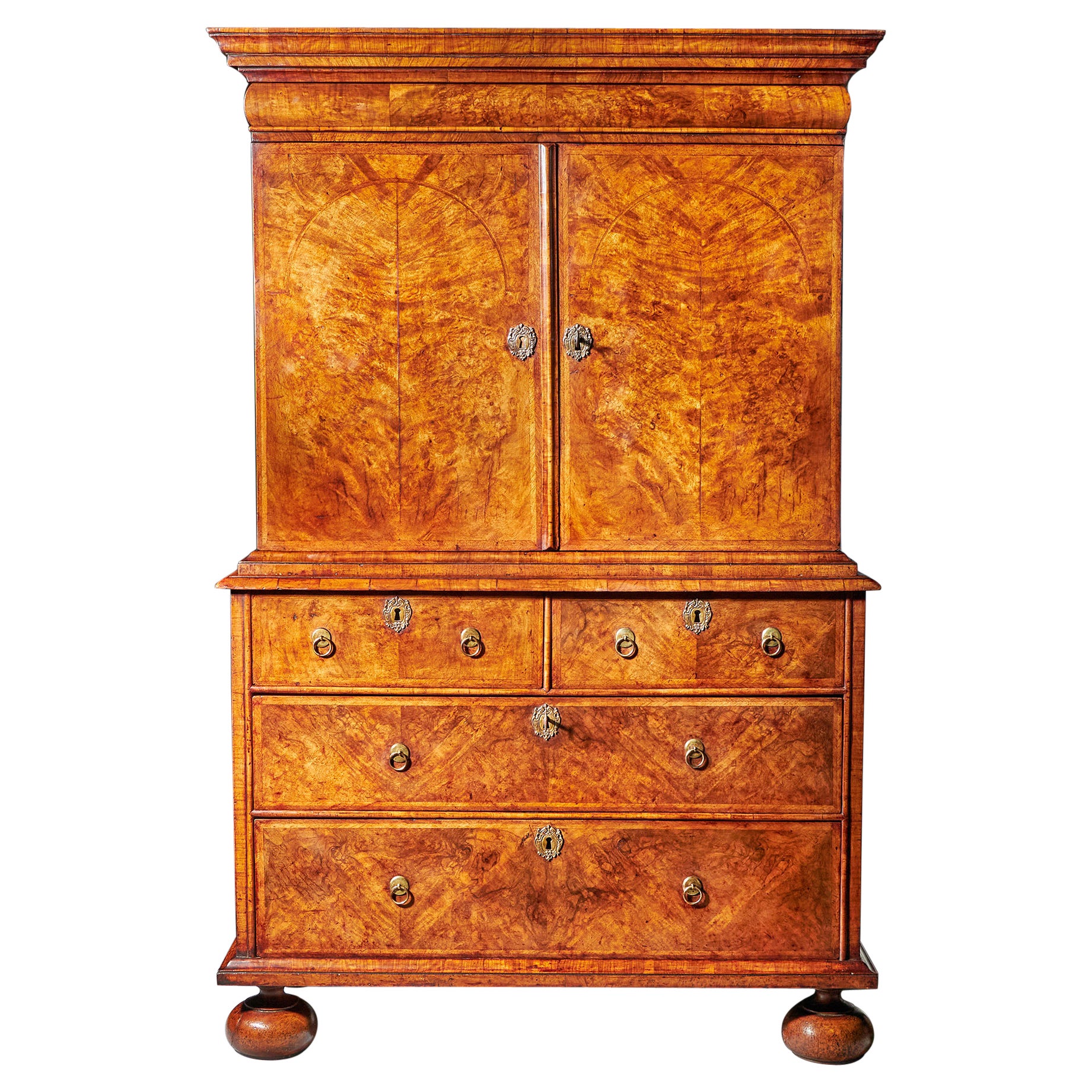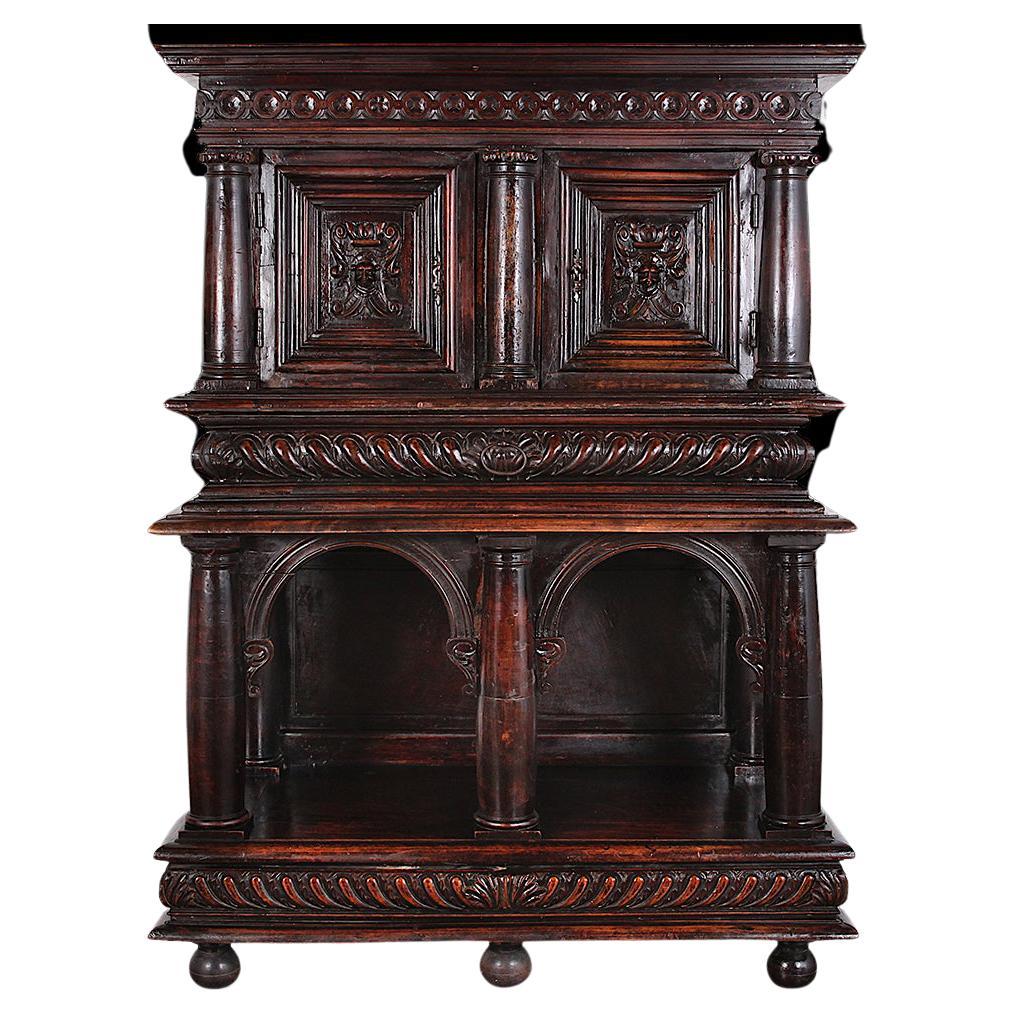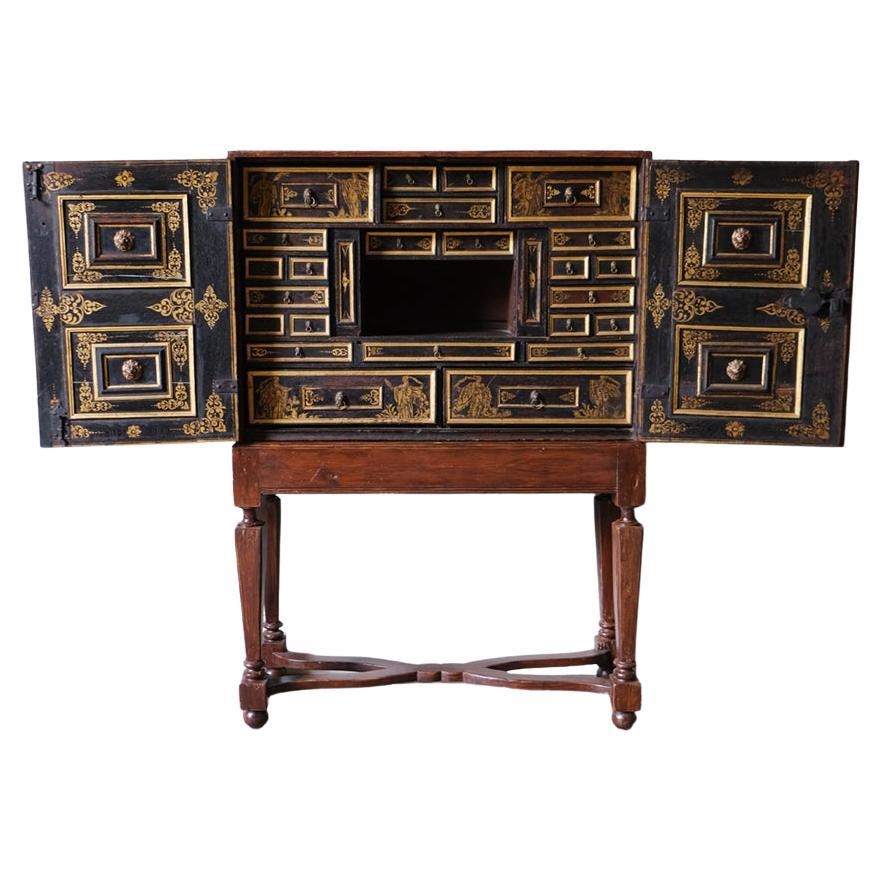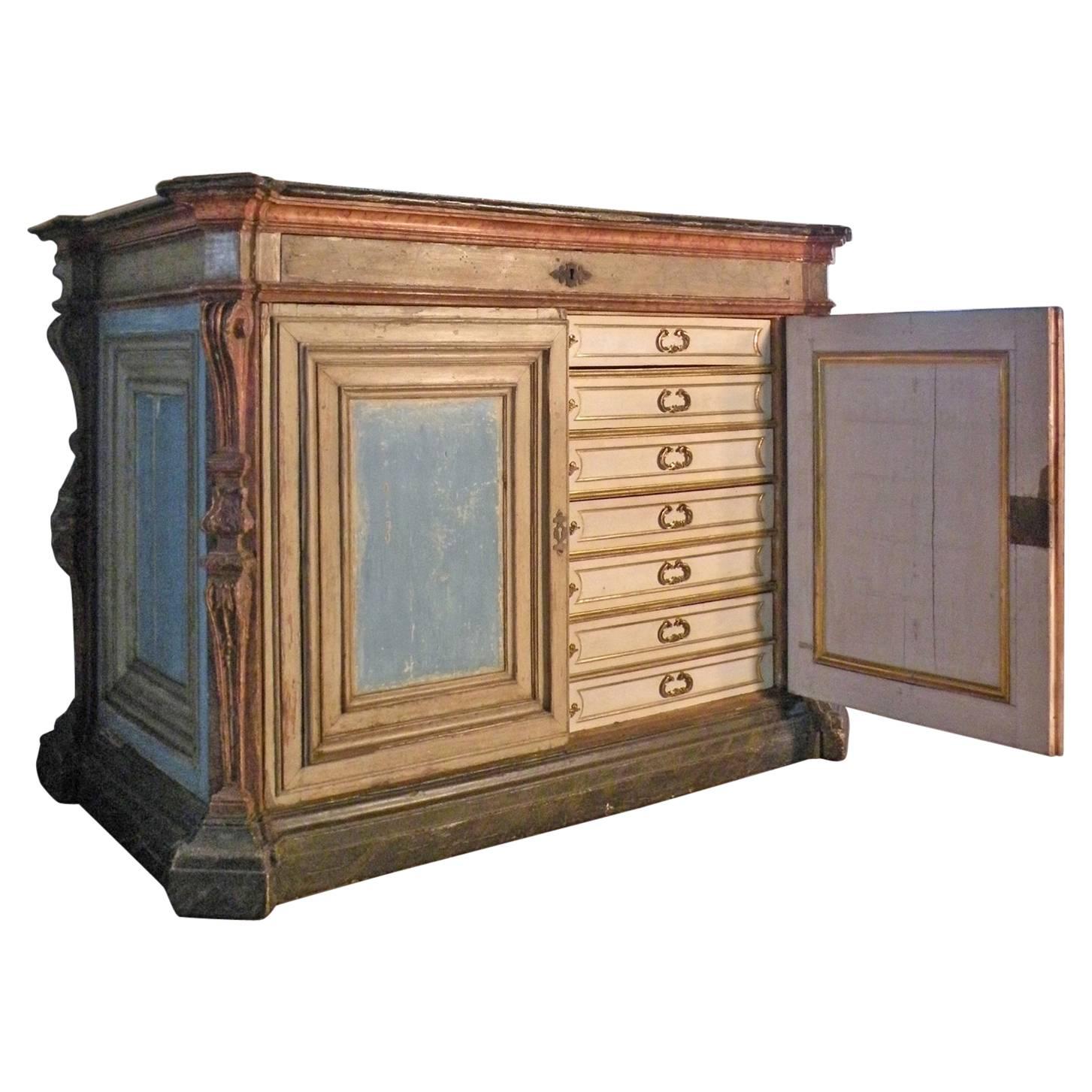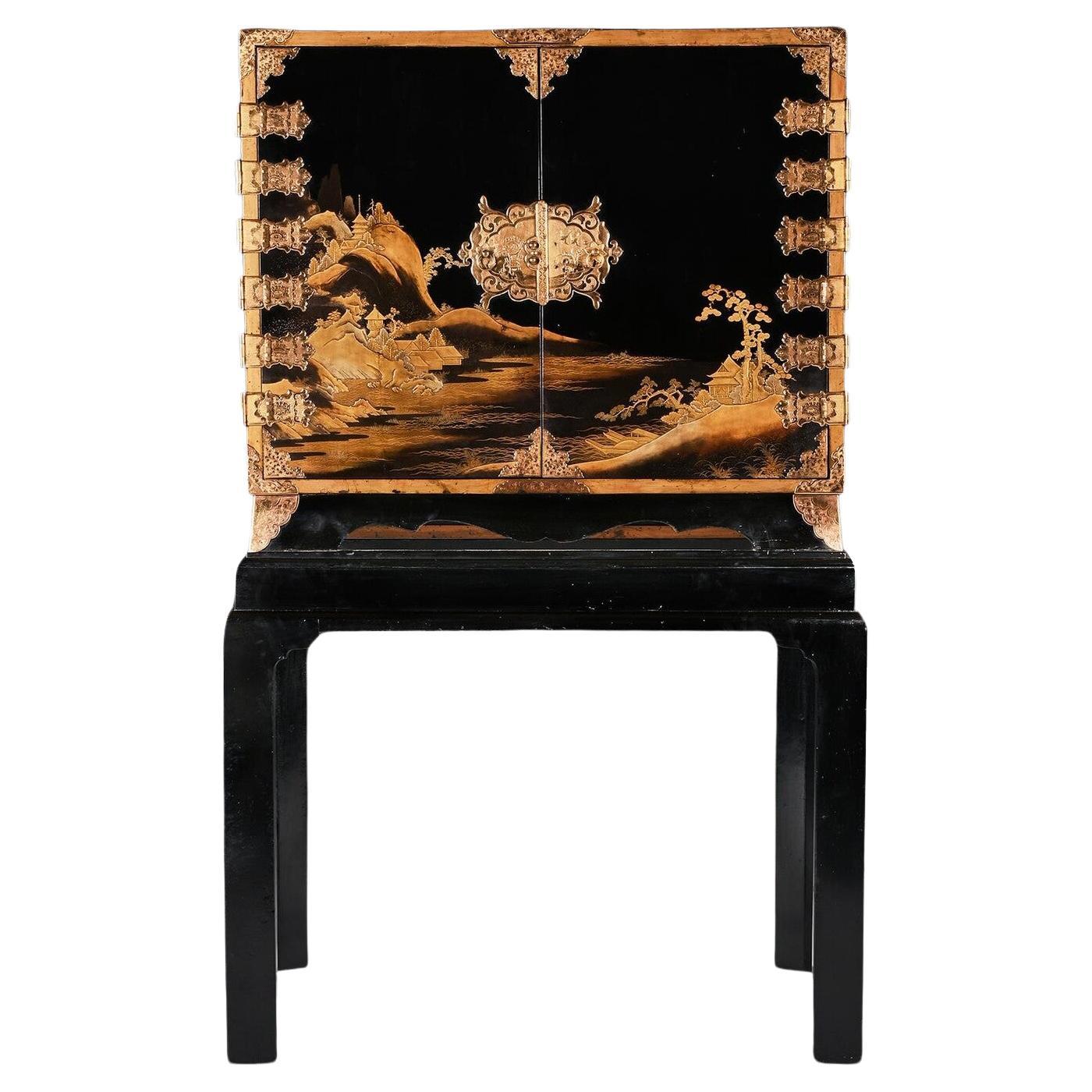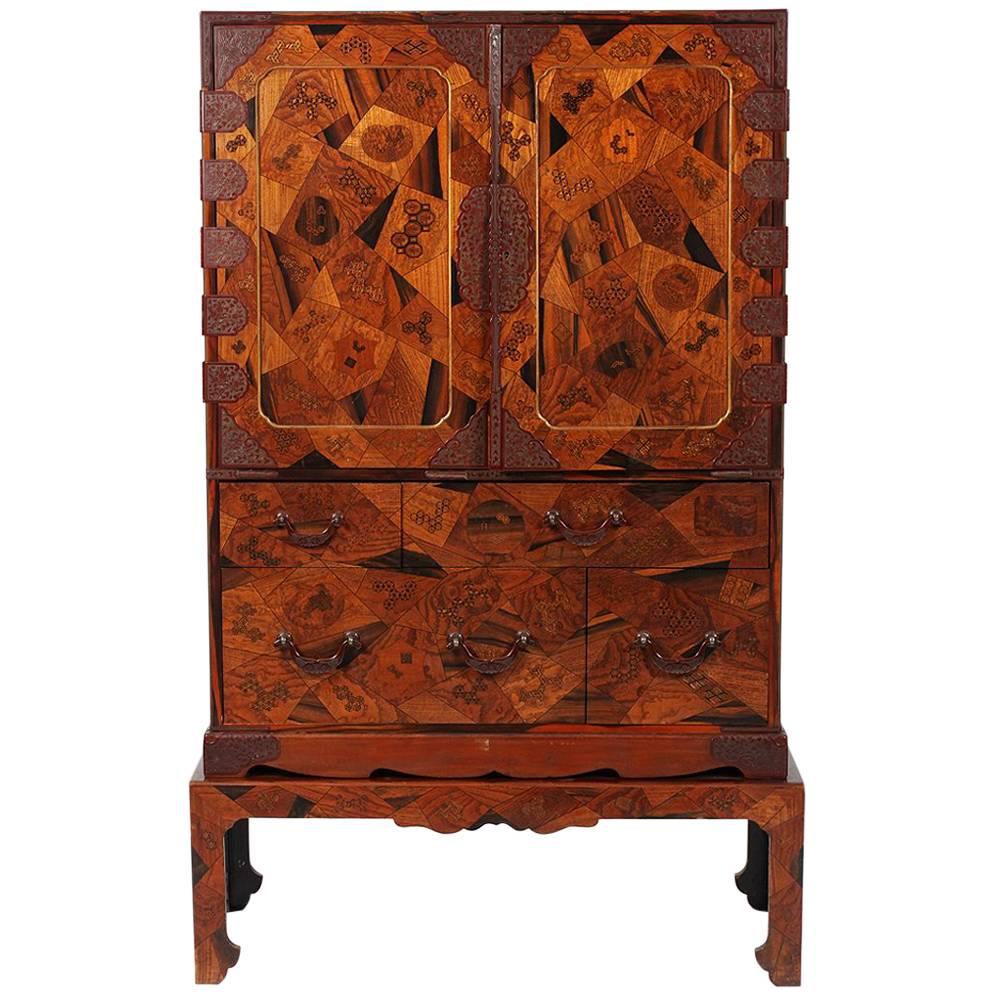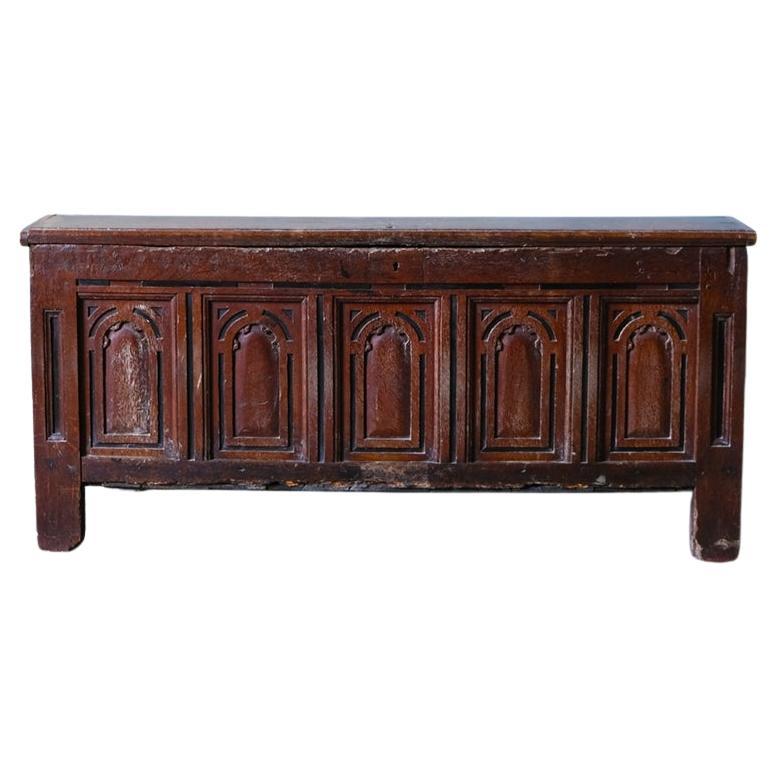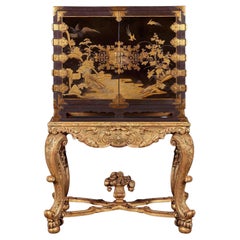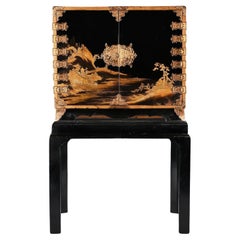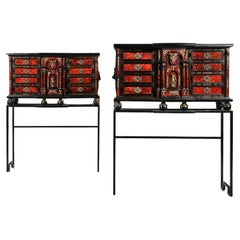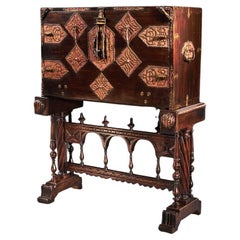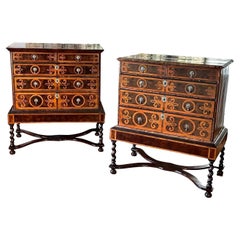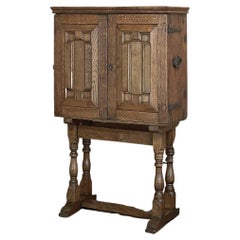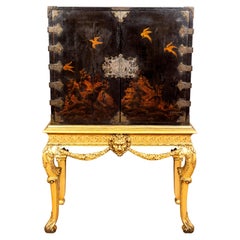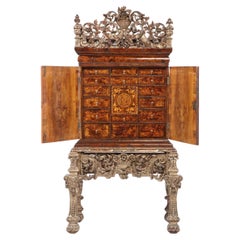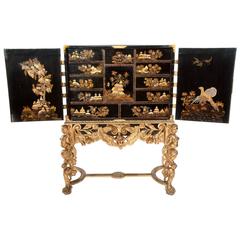
Magnificent 17th Century Japanned Collectors Cabinet on Stand
View Similar Items
Want more images or videos?
Request additional images or videos from the seller
1 of 11
Magnificent 17th Century Japanned Collectors Cabinet on Stand
About the Item
- Dimensions:Height: 60.04 in (152.5 cm)Width: 50.6 in (128.5 cm)Depth: 22.45 in (57 cm)
- Style:Chinoiserie (Of the Period)
- Materials and Techniques:
- Place of Origin:
- Period:Late 17th Century
- Date of Manufacture:1690
- Condition:
- Seller Location:Benington, GB
- Reference Number:Seller: 23411stDibs: LU118325828403
About the Seller
5.0
Vetted Professional Seller
Every seller passes strict standards for authenticity and reliability
Established in 1969
1stDibs seller since 2015
124 sales on 1stDibs
Typical response time: 1 hour
Associations
LAPADA - The Association of Arts & Antiques DealersThe British Antique Dealers' Association
Authenticity Guarantee
In the unlikely event there’s an issue with an item’s authenticity, contact us within 1 year for a full refund. DetailsMoney-Back Guarantee
If your item is not as described, is damaged in transit, or does not arrive, contact us within 7 days for a full refund. Details24-Hour Cancellation
You have a 24-hour grace period in which to reconsider your purchase, with no questions asked.Vetted Professional Sellers
Our world-class sellers must adhere to strict standards for service and quality, maintaining the integrity of our listings.Price-Match Guarantee
If you find that a seller listed the same item for a lower price elsewhere, we’ll match it.Trusted Global Delivery
Our best-in-class carrier network provides specialized shipping options worldwide, including custom delivery.More From This Seller
View All17th Century Japanese Lacquer Cabinet On French Giltwood Regence Stand
Located in Benington, Herts
An Extremely Fine and Very Important 17th Century Japanese Lacquer Cabinet on French Giltwood Stand of Regence Period circa 1680-1690
Provenance
Likely acquired by Herman Willem ...
Category
Antique 17th Century Japanese Edo Cabinets
Materials
Giltwood, Lacquer
An Important Late 17th Century Japanese Lacquered Cabinet Edo Period on Stand
Located in Benington, Herts
An extremely fine, elegant and rare late 17th Century Japanese lacquer cabinet, from the Eco period, on later lacquered black stand.
Japanese circa 1690
Provenance
A private Scottish collection
This outstanding cabinet is a fascinating fusion of east and west. The cabinet itself would have been made in Japan, c.1690, and is decorated to the outside with hiramaki-e lacquer. This technique involves the use of sprinkled gold powder which adheres to the lacquer surface. On the best pieces, as with this example, many layers are added in order to create areas of high relief and give depth to the surface decoration. The taste of the Japanese workshops in this period was often for quite restrained pieces with plenty of the black background visible, unlike some of the busier Chinese lacquer or European japanned examples produced around the same time. The Japanese makers seemed content to rely on the outstanding quality of the lacquer itself, regarded by most experts as the finest lacquer ever produced, and did not see the need to cover every surface believing that less was more in this respect. The lacquer here is used to produce a mountainous scene with buildings on the bank of a river, the other side of the river with more buildings and a contrasting flatter and forested landscape. The fine perspective achieved is the result of the clever use of raised and flatter areas in the lacquer itself in combination with the drawing of the design itself.
Another remarkable aspect of this piece is the fine metalware throughout, but particularly the lockplate / hasp, hinges and foot mounts to the front. This is all beautifully cast and engraved contrasting against the black background. Interestingly another cabinet on stand with near identical metalwork was advertised in the Burlington Magazine, November 1913, with the dealer W. Williamson and Sons of Guildford. The lacquer on that piece is similarly refined and it seems likely that both pieces came from the same workshop.
The European influence in our piece can be seen in both the later ebonised stand and in the japanned decoration which has been applied to the inside of the doors and is also very fine indeed. This consists of two panels with birds of prey perched on branches in colours set against a golden background. The cabinet has a recent Scottish provenance and so it is likely that the ebonised stand was made in Britain though such pieces were made throughout Europe as a way of quite literally elevating these imported pieces of eastern lacquer as in Japan these would have been used on the floor. Inside the cabinet there is a combination of more Japanese lacquer and lock plates and European drawer handles. Most of the lacquer drawer fronts incorporate mountainous scenes and birds in combination, with a few purely one or the other of the two subjects. Again the lacquer is in excellent condition and is of exceptional quality with multiple layers of relief used in one single scene in many cases.
As mentioned above, Japanese lacquer is the most technically brilliant of the eastern lacquers and, as such, was highly prized by collectors and connoisseurs throughout Europe when this piece was made. The acquisition of such pieces would only have been possible for a small group of incredibly wealthy individuals, largely royal or high ranking courtiers or merchants connected with the East India trade...
Category
Antique 1690s Japanese Edo Cabinets
Materials
Lacquer
Pair of 17th Century Spanish Baroque Gilt Bronze Mounted Cabinets on Stands
Located in Benington, Herts
An Exceptional and rare pair of 17th Century Spanish Baroque gilt bronze and metal mounted ebonised and tortoiseshell cabine...
Category
Antique Late 17th Century Spanish Baroque Cabinets
Materials
Tortoise Shell, Ebony
Exceptional Early 17th Century Spanish Walnut Vargueno Desk on Stand
Located in Benington, Herts
An exceptionally fine example of an early 17th Century Spanish renaissance walnut vargueno / bargueno escritorio writing desk on trestle stand.
Sp...
Category
Antique 17th Century Spanish Renaissance Desks and Writing Tables
Materials
Walnut
19th Century North European Japanned or Lacquered Commode in the Rococo Taste
Located in Benington, Herts
A Highly Interesting Mid 19th Century North European Japanned or Lacquered Commode in the Rococo Manner
Clearly inspired by French Louis XV forms, this...
Category
Antique Mid-19th Century European Rococo Commodes and Chests of Drawers
Materials
Lacquer
An Important 18th Century George Iii Satinwood and Sabicu Writing Cabinet
Located in Benington, Herts
A fine late 18th Century George III Satinwood and sabicu ladies writing cabinet with important provenance. (Possibly by George Simpson)
English London made - Circa 1785
Provenance
Exhibited by W. R. Harvey in their Old Bond Street showrooms in 1986 and 1987, the piece being chosen to be advertised in Country Life magazine in 1986 and in the Grosvenor House...
Category
Antique 1780s English George III Cabinets
Materials
Satinwood
You May Also Like
Fine Rare Pair 17th Century Oyster Walnut Chests on Stands
Located in Lymington, GB
A fine, and rare, very closely-matched pair of late-17th century oyster walnut chests on stands.
English, Charles II period, ca 1685.
Both with f...
Category
Antique 17th Century English Charles II Commodes and Chests of Drawers
Materials
Walnut
18th Century Dutch Collector's Cabinet
Located in Dallas, TX
18th Century Dutch Collector's Cabinet was designed for the express purpose of keeping a wide variety of numerous collectibles in one case, and features, behind the main cabinet door...
Category
Antique Late 18th Century Dutch Dutch Colonial Cabinets
Materials
Wrought Iron
George I Giltwood and Japanned Cabinet on Stand
Located in Essex, MA
The cabinet with two doors opening to an interior fitted with drawers. Two drawers with reverse painting on glass of a country house and gardens, another drawer with a stump work...
Category
Antique 1720s English George I Cabinets
Materials
Wood
Charles II Walnut, Mulberry Marquetry Cabinet, Gilt Stand, 17th C H.F. du Pont
Located in Brooklyn, NY
Charles II walnut and mulberry marquetry cabinet on giltwood stand, c. 1650-1670. Giltwood cresting and stand appear to be from a few decades later.
The form of furniture now described as a cabinet developed across Spain and France in the 16th Century. In architecture, a cabinet is a small private room for the housing or display of precious objects, hence the term could be aptly applied to the small, portable pieces of furniture made for the carriage and display of valuable items and able to stand upon a table, trestle stand...
Category
Antique Mid-17th Century British Charles II Cabinets
Materials
Walnut
$102,520 Sale Price
44% Off
Fine 17th Century William and Mary Burl Walnut Cabinet on Chest, Circa 1690
Located in Oxfordshire, United Kingdom
17th century William and Mary burr walnut cabinet on chest, circa 1690. England. Concealing two secret compartments.
The Cabinet
The cross-grain cornice...
Category
Antique 17th Century English William and Mary Cabinets
Materials
Walnut, Burl, Oak
French 17th Century and Later Cabinet on Stand
Located in Vancouver, British Columbia
An ornately-carved walnut 17th century and later French cabinet on stand, the top with a pair of carved doors and paneled carved sides with co...
Category
Antique 17th Century French Renaissance Cabinets
Materials
Walnut
Recently Viewed
View AllMore Ways To Browse
Japanese Egg
Japanese Carved Chest
Antique Japanese Wood Carved Figures
Chinoiserie Egg
Bombe Burr Walnut Commodes
Cherry Ball And Claw
Cherry High Boy
Commode Toilet
Danish Tallboy Rosewood
Drawer Knobs Crystal
English 2 Over 3 Drawer Chest
English Cedar Chest
English Inlay Bow Front Chest 19th Century
English Walnut Chest 3 Drawer
Fancher Furniture
Federal Maple Chest Of Drawers
Flame Mahogany Highboy
George 1st Walnut Chests
